- Home
- Canal Walking [ Walking from Otsu to Yamashina ]
Here are some popular sightseeing spots
between Otsu and Yamashina.
Compare the old images with the original spots,
and enjoy walking!
East Entrance of the First Tunnel
Japan's longest tunnel at that time, where an inscription written by Hirobumi Ito's remains
West Exit of the First Tunnel
Beautiful spot for autumn color of leaves and a plaque inscription written by Aritomo Yamagata
East Entrance of the Third Tunnel / No.11 Bridge
It has been said that the tunnel was built on the basis of German railway tunnels
Recommended Route
Here are some recommended
walking routes!
Long Walking Route
- Approx. 2 hours 10 minutes
- Approx. 2 hours 30 minutes (excluding breaks)
- ①Miidera Station on Keihan Ishiyama-Sakamoto Line
- 3 minutes on foot
- ②Otsu Lock Gate
- 3 minutes on foot
- ③East Entrance of the First Tunnel
-
35 minutes on foot You will walk along the old pass called "Kozeki-goe".

- ④First Vertical Tunnel
- 13 minutes on foot
- ⑤West Exit of the First Tunnel
-
12 minutes on foot Cherry trees stand along the way from the west exit of the tunnel

- ⑥Shinomiya Boat Reservoir
-
15 minutes on foot Visiting the old temple Bishamon-do in Yamashina is also recommended!

- ⑦Intersection with Anshoji River
- 32 minutes on foot Honkokuji temple on the way is a beautiful spot for autumn color of leaves
- ⑧East Entrance of the Second Tunnel
- 5 minutes on foot Take a detour through the residential area, and head to the west exit of the tunnel
- ⑨West Exit of the Second Tunnel
-
3 minutes on foot Cherry trees stand along the way

- ⑩East Entrance of the Third Tunnel / No.11 Bridge
- 11 minutes on foot
- ⑪Monument for the remains of the brick factory
- Shortly
- ⑫Misasagi Station on the Subway Tozai Line
Short Walking Route
- Approx. 1 hour 5 minutes
- Approx. 1 hour 15 minutes (excluding breaks)
- ①Misasagi Station on the Subway Tozai Line
- Shortly
- ②Monument for the remains of the brick factory
- 11 minutes on foot
- ③East Entrance of the Third Tunnel / No.11 Bridge
-
3 minutes on foot Cherry trees stand along the way

- ④West Exit of the Second Tunnel
-
5 minutes on foot Take a detour through the residential area, and head to the west exit of the tunnel

- ⑤East Entrance of the second tunnel
- 35 minutes on foot
- ⑥Intersection with Anshoji River
- 10 minutes on foot
- ⑦Yamashina Station on the Subway Tozai Line/JR Tokaido Line/Keihan Keishin Line
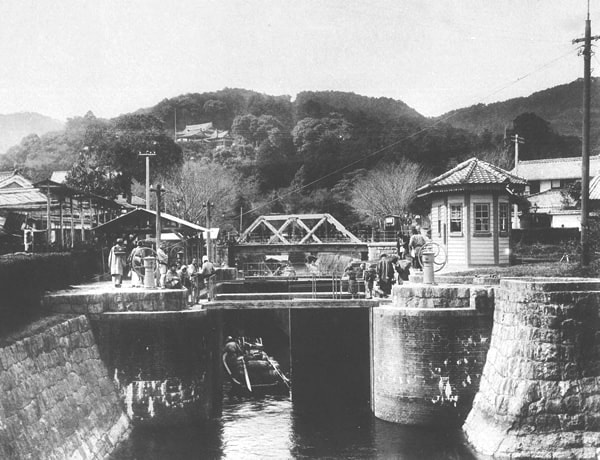
1910 (Meiji 43rd year)
-
Otsu Lock Gate
A lock gate is used to adjust the water level for ships to pass through the waterway with its height difference. At the time of construction, the canal water surface had a difference in height of approximately 1.5 meters that peaked at Otsu Lock Gate. This gate gained much attention as Japan's first full-scale brick lock gate. The initial gate door was made of cypress, and opened or closed by the rotation of handles operated by four people.
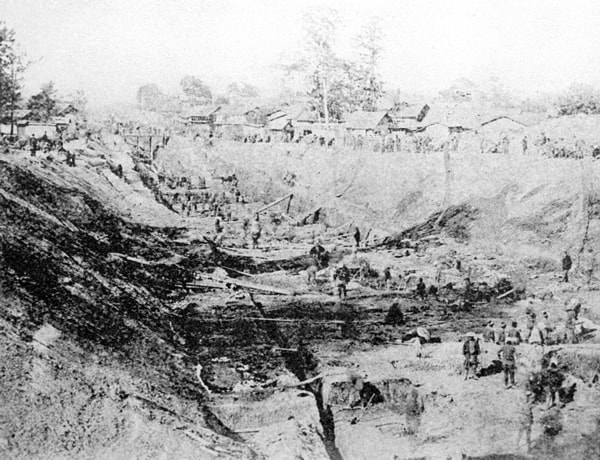
1886 (Meiji 43rd year)
-
East Entrance of the First Tunnel
The first tunnel from Otsu to Kyoto is approximately 2.4 kilometers long. It took two years to pass through, it was the longest in Japan at that time. Note that there are plaques by politicians who represented the Meiji Era displayed above the entrance of the three tunnels, which were created at the time of the first canal construction. The inscription on the plaque at the east entrance of this first tunnel was written by Hirobumi Ito, saying that ever-changing climates and landscape changes are magnificent.
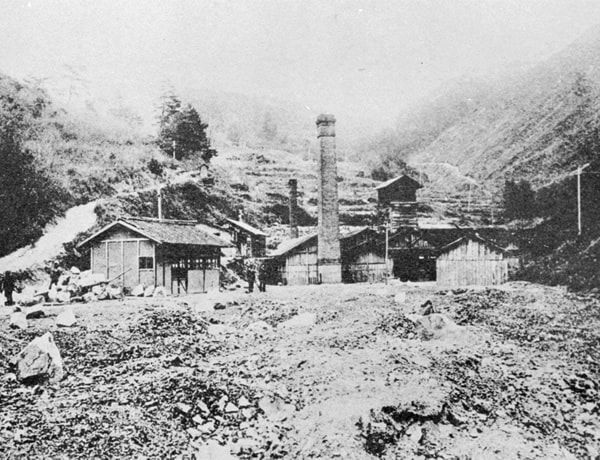
1940 (Meiji 15th year)
-
First vertical tunnel
In the excavation construction of the first tunnel, the "vertical tunnel (shaft) method" was adopted, which was the first attempt in large-scale tunnel constructions in Japan. Digging vertical tunnels (shaft) deeper from the top of the mountain in the almost middle of the tunnel, and further digging from total four places, two for each of inside and outside of the mountain, resulted in a reduction of the construction period.
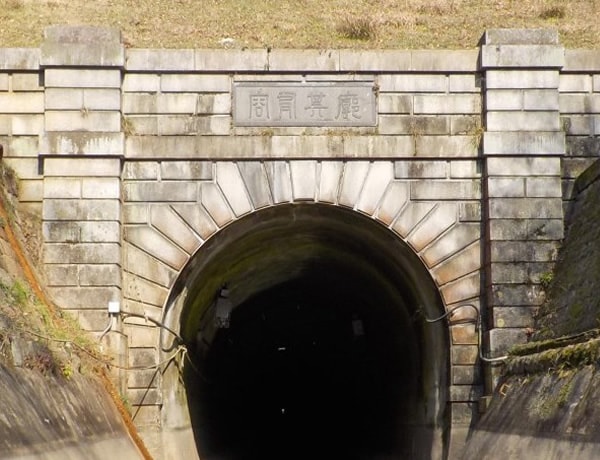
-
West Exit of the First Tunnel
The area around the west exit of the first tunnel is also known as a beautiful spot for autumn color of leaves. The inscription on the plaque displayed here was written by Aritomo Yamagata, saying that deliberate extent of the canal filled with eternal water represents the generous ability of people.
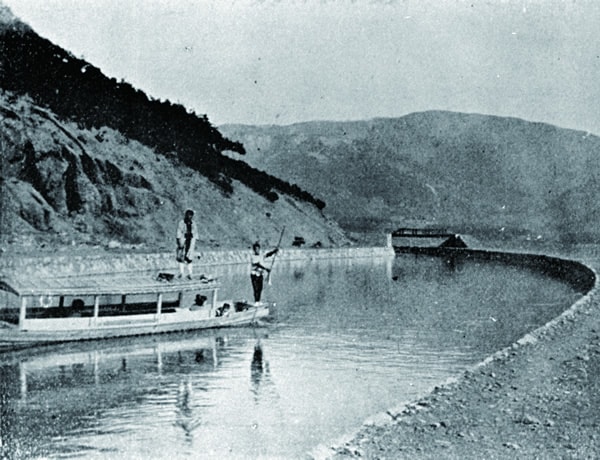
-
Shinomiya Boat Reservoir
Along the first canal route from Otsu to Keage, boat reservoirs are provided at the five positions of Shinomiya, Moroha, Misasagi, Hinooka, and Keage. "Boat Reservoir" refers to a ship berth space created for loading and unloading cargo, as well as for incoming and outgoing people. Shinomiya Boat Reservoir is nicknamed "Jubako (Japanese tiered food box) Dam" because of its square shape.

-
Intersection with Anshoji River
On the overlapping point where the canal and Anshoji River flowing from the north to the south in Yamanashi meet, the canal waterway was made to run above the river by installing the waterway bridge. This is to avoid the interruption of both streams, and the similar device is seen in Suirokaku at Nanzenji temple.There remains the original brick structure as it was on the abutment that supports the canal waterway.

-
No.10 Bridge (Kuroiwa-Bridge)
Based on the prototype "No.11 Bridge" made of old rails instead of reinforced concrete, the full-scale reinforced concrete bridge "No.10 Bridge (Kuroiwa-Bridge)" was built in 1904 (Meiji 37th). The name of the engineer who conducted the construction is engraved on the abutment of the right bank. The technology developed through the construction of the two bridges was put into practice later, for example, in the second canal construction, where reinforced concrete was mainly used.
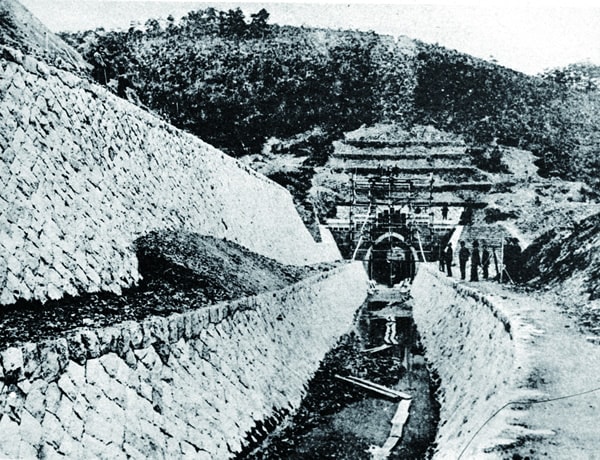
1887 (Meiji 20th year)
-
Second Tunnel
The inscription on the plaque displayed at the east entrance was written by Kaoru Inoue, saying that a person of virtue respects knowledge, while a person of wisdom sees water flowing and makes it food for the mind. The inscription on the plaque at the west exit was written by Judo Saigo, saying that one must go along the mountain to reach the water source.
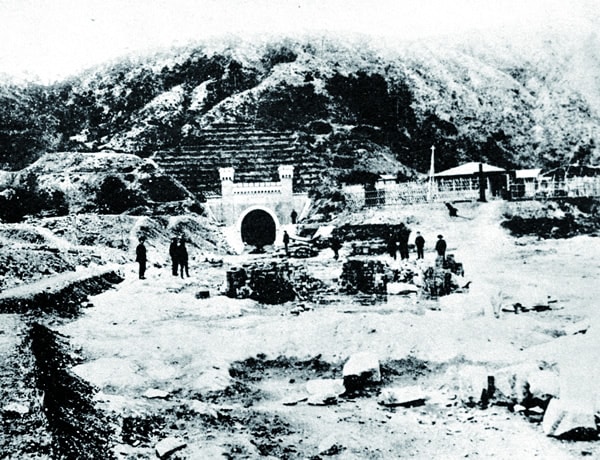
1887 (Meiji 20th year)
-
East Entrance of the Third Tunnel / No.11 Bridge
The inscription on the plaque displayed at the east entrance of the third tunnel was written by Masayoshi Matsukata, saying that the green of pine trees can be seen more vividly after a drizzling rain has stopped. Just in front of the east entrance is Japan's first reinforced concrete bridge, "No.11 Bridge", built under the instruction of Sakuro Tanabe, in July, 1903 (Meiji 36th year).
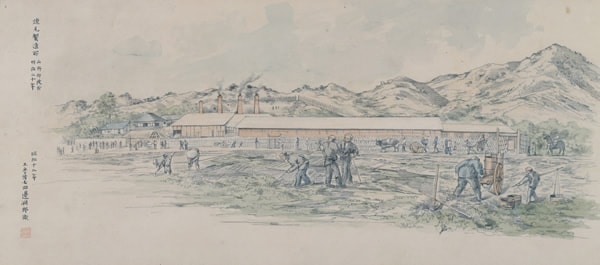
-
Remains of the brick factory
Most of the construction materials besides dynamite and cement for the first canal were obtained self-sufficiently. Most bricks used for the tunnels and Suirokaku were made in the factory we owned and operated. We constructed our factory dedicated to brickmaking, and manufactured as many as approximately 14 million bricks. Today, there is a stone monument indicating the remains of the factory in front of the subway’s Misasagi Station.














